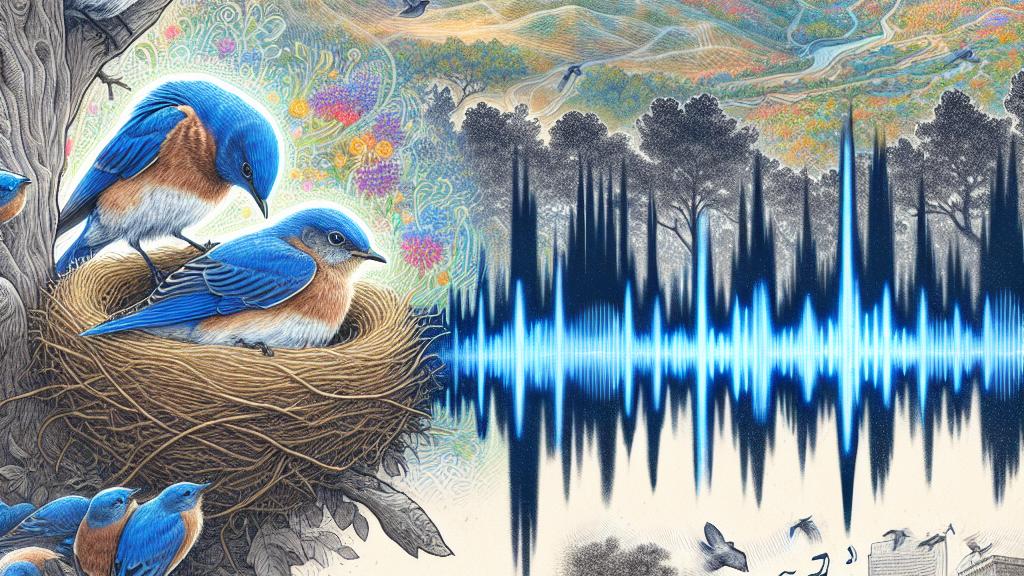Impact of Noise on Western Bluebird Parenting
Overview
- A groundbreaking study unveils stark contrasts between short-term and continuous noise impacts on bluebird parental care.
- Short-term noise disrupts feeding behaviors significantly, while continuous noise surprisingly fosters adaptability.
- These revelations are crucial for shaping conservation strategies to protect wildlife from urban soundscapes.

Understanding the Study
In the vibrant landscapes of the United States, an intriguing study conducted by researcher Kerstin Ozkan shines light on the often-overlooked impacts of noise pollution on the nurturing behaviors of Western Bluebirds (Sialia mexicana). This research is not merely academic; it delves into the heart of how human-generated sounds can disrupt the delicate dance of parenting in these remarkable birds. Picture this: short bursts of noise, like the jarring sounds from rush hour traffic, significantly hinder the ability of parent bluebirds to feed and care for their young. Yet, in a surprising twist, prolonged exposure to continuous noise leads to an intriguing adaptation. The deep insights from this study prompt us to reconsider the resilience of wildlife in navigating the challenges posed by modern urban life.
Short-Term vs. Continuous Noise Effects
To truly grasp the essence of this research, let’s explore the captivating findings that differentiate the responses of bluebirds to various noise conditions. When exposed to brief instances of traffic noise, these birds hesitated noticeably in feeding their nestlings, reflecting a striking behavioral change. For instance, they often took extended breaks or even skipped feeding altogether during the noise trials. However, the magic unfolds when we look at what happens afterward: when the noise ceased and tranquility returned, feeding rates reached impressive heights, suggesting a compensatory behavior — as if the birds were making up for lost time. On the other hand, bluebirds subjected to continuous noise exhibited a completely different story. They displayed increased provisioning awareness, showing not only their resilience but also the amazing adaptability these creatures possess. This juxtaposition reveals the intricate ways wildlife responds to environmental stressors, demonstrating their extraordinary ability to adjust and thrive despite daunting challenges.
Implications for Conservation
These profound findings carry significant implications for conservation efforts in our increasingly noisy world. They point to the urgent need for a multi-faceted approach when it comes to protecting wildlife amidst urban noise pollution. Imagine creating quieter zones, implementing sound barriers, or even conducting ongoing research to better understand how different species cope with sound disturbances. For the western bluebird and potentially other wildlife, recognizing that they may thrive under continuous noise environments while struggling under short bursts adds a layer of complexity to conservation strategies. By prioritizing habitat conservation alongside these acoustic considerations, we can foster a healthier environment for vulnerable bird populations. Ultimately, this research not only broadens our understanding of wildlife adaptability but actively challenges us to find innovative solutions to help them flourish in ever-evolving landscapes filled with human-made noise.

Loading...